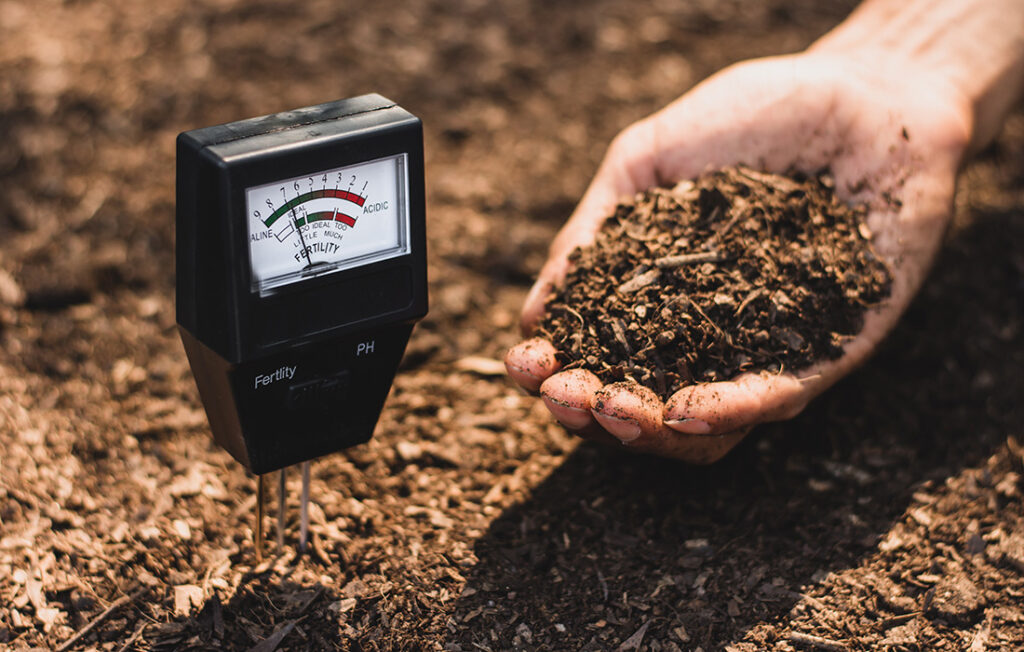Acidifying soil is a crucial process for gardeners and farmers who wish to grow plants that thrive in acidic conditions. Understanding the need for and methods of acidifying soil can significantly improve plant health and crop yield. This article explores the reasons for acidifying soil, the methods available, and tips for maintaining the desired pH levels.
Why Acidify Soil?
Certain plants, such as blueberries, azaleas, and rhododendrons, require acidic soil to absorb nutrients effectively. Soil pH affects the availability of essential nutrients like iron, manganese, and phosphorus. In alkaline soils (pH above 7), these nutrients can become less available, leading to deficiencies and poor plant health. Acidifying soil helps to create an environment where these plants can thrive.
Methods to Acidify Soil
Organic Matter Addition
Compost: Adding compost made from organic materials like fruit scraps, coffee grounds, and vegetable peelings can lower soil pH over time.
Peat Moss: This is an excellent acidifying agent. Incorporate it into the soil to gradually decrease pH levels.
Sulfur-Based Products
Elemental Sulfur: This is one of the most effective and widely used methods. Microorganisms in the soil convert elemental sulfur to sulfuric acid, which lowers pH.
Aluminum Sulfate: This acts faster than elemental sulfur, making it suitable for quick pH adjustments. However, it should be used carefully to avoid aluminum toxicity.
Acidic Fertilizers
Ammonium Sulfate: This fertilizer not only provides nitrogen but also lowers soil pH.
Urea and Ammonium Nitrate: These nitrogen-based fertilizers also contribute to soil acidification.
Acidic Mulches
Pine Needles: Using pine needles as mulch can gradually acidify the soil.
Oak Leaves: Like pine needles, oak leaves are acidic and can help lower soil pH over time.
Steps to Acidify Soil
Test Soil pH
Before making any amendments, it’s crucial to test the soil pH. Soil testing kits are available at garden centers, or you can send a soil sample to a laboratory for more detailed analysis.
Calculate the Amount of Amendment Needed
The amount of sulfur or other acidifying agents required depends on the soil type, current pH, and the desired pH. Clay soils require more amendments than sandy soils.
Apply the Amendment
Elemental Sulfur: For sandy soils, apply about 1 to 2 pounds per 100 square feet to lower the pH by one unit. For clay soils, use 3 to 4 pounds.
Aluminum Sulfate: Apply at a rate of 5 to 6 pounds per 100 square feet to lower pH by one unit.
Incorporate and Water
Work the amendment into the top 6 inches of soil. Water the area thoroughly to activate the acidifying process and help distribute the amendment evenly.
Monitor pH Levels
Regularly test the soil pH to ensure it reaches and maintains the desired level. Adjust as necessary based on the test results.
Tips for Maintaining Acidic Soil
Mulching: Use acidic mulches like pine needles and oak leaves to maintain low pH levels.
Watering: Avoid using alkaline water sources. Rainwater is usually acidic and can help maintain soil acidity.
Regular Testing: Periodically test the soil pH to monitor changes and make adjustments as needed.
Acidifying soil is essential for growing certain acid-loving plants. By understanding the methods and steps involved, gardeners and farmers can create optimal conditions for their plants. Regular monitoring and maintenance of soil pH will ensure that the plants receive the necessary nutrients for healthy growth. With the right approach, acidifying soil can be a straightforward and rewarding process.
Common Challenges and Solutions
While acidifying soil can significantly benefit certain plants, it also presents challenges. Here are some common issues and how to address them:
Over-Acidification
Problem: Applying too much sulfur or acidic fertilizer can lower the soil pH too much, harming plants.
Solution: Always follow recommended application rates and regularly test soil pH. If over-acidification occurs, applying lime (calcium carbonate) can help raise the pH to a more suitable level.
Soil Type Considerations
Problem: Different soil types respond differently to acidifying amendments.
Solution: Conduct a soil test to understand the composition of your soil. Sandy soils require less amendment compared to clay soils. Adjust the amount of sulfur or other acidifying agents accordingly.
Microbial Activity
Problem: The conversion of elemental sulfur to sulfuric acid is dependent on soil microbial activity, which can be slow in cold or dry conditions.
Solution: Ensure that the soil is adequately moist and consider applying sulfur in the warmer months when microbial activity is higher.
Nutrient Imbalance
Problem: Acidifying the soil can sometimes lead to nutrient imbalances, such as excessive availability of certain nutrients that can become toxic in high concentrations.
Solution: Regularly test soil nutrient levels along with pH. Use balanced fertilizers and amendments to maintain nutrient levels within optimal ranges.
Acidifying Soil for Specific Plants
Blueberries: Blueberries thrive in very acidic soils with a pH of 4.5 to 5.5. Use peat moss, elemental sulfur, and acidic mulches to maintain this pH range.
Azaleas and Rhododendrons: These plants prefer a pH between 5.0 and 6.0. Incorporate composted pine bark and peat moss into the soil, and use ammonium sulfate as a fertilizer.
Hydrangeas: The flower color of hydrangeas can change based on soil pH. For blue flowers, aim for a pH of 5.2 to 5.5. Use aluminum sulfate and organic mulches to achieve this.
Environmental Considerations
Acidifying soil should be done with environmental care to avoid negative impacts:
Runoff: Excessive use of acidifying agents can lead to runoff, which can affect nearby water sources. Always use the minimum effective amount and ensure proper soil incorporation.
Soil Health: Maintaining healthy soil structure and microbial activity is essential. Avoid over-application of any amendment and promote organic matter to support soil life.
Acidifying soil is a valuable technique for gardeners and farmers who wish to cultivate acid-loving plants. By understanding the methods, challenges, and plant-specific needs, you can effectively manage soil pH to create an optimal growing environment. Regular monitoring and careful application of amendments will help maintain the desired pH levels, ensuring your plants remain healthy and productive. With these guidelines, you can successfully navigate the process of soil acidification and enjoy the benefits of thriving plants.
This comprehensive guide should provide you with the knowledge and confidence to acidify soil for your gardening or farming needs. Whether you’re growing blueberries, azaleas, or any other acid-loving plants, these steps and tips will help you achieve the best results.






